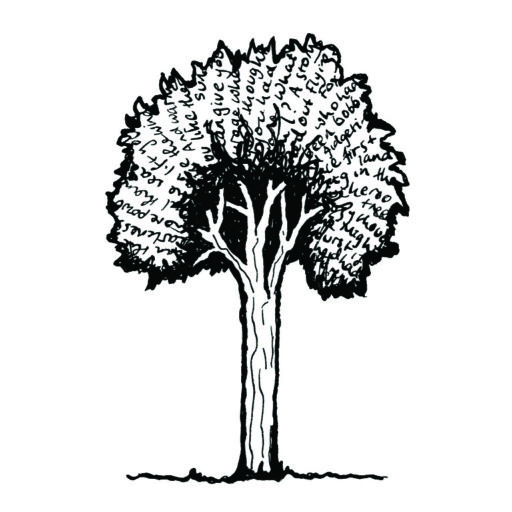This week I did a little forest bathing – ‘Shinrin-yoku’ to the Japanese. It’s the practice of immersing oneself in the forest atmosphere, and is said to reduce stress, and maybe even prevent cancer. I took my forest bath by walking to Coomera Falls, through subtropical rainforest, in the lovely Lamington National Park. The winter forest was sunlit and still, refreshed after several days’ rain. Many birds that frequent the forest in spring and summer are elsewhere at this time, and the ones that remain seem quiet and subdued. In summer this place buzzes and hums with insects, day and night, but they are all silent now. This leaves the stage open for that most marvelous of songsters, the lyrebird.
Here is a short recording I took along the walking path, during my forest bath, of Mr Albert Lyrebird singing. Perhaps it will allow you a brief dip into the forest, from wherever you are reading.



Great video thanks Paula.
I expanded to full screen and practiced a bit of Shinrin-yoku sitting at my desk.
Great! Glad you enjoyed it.
Hello Paula,
I’m enjoying your posts.
I’ve been having discussions with various people about “nature deficit disorder”, “forest bathing” and the like. I’d love to see us start using “nature bathing”, as this can be done in a wider range of natural settings. Many host plants for insects and many other animals occur in a much wider variety of settings than forests.
I spend a deal of my time promoting plants as a whole, rather than trees in particular. Important plants occur at all levels of a canopy of any height. Sometimes they are the tiniest plants rather than trees. Much of the work I do is through the Butterfly Project at the Woodford Folk Festival. I’ve also started organising a series of walks through the Queensland Naturalists’ Club called “Walking with Life” with the intention of offering nature bathing opportunities in the Brisbane area.
Cheers
Helen
Hi Helen, good to hear from you, and great that you’re also active in the promotion of forest – or nature – bathing. By coincidence I signed up to the meetup group for the Qld Naturalists walks just last week, and will try to make it to your next outing. You’re absolutely right of course about the many important plant-insect interactions that exist, in some cases going back millions of years. I look forward to learning more from you about the details of these in our part of the world. Cheers, Paula
What a beautiful post, Paula. I love the Japanese concept of ‘forest bathing.’ This is something I can do daily as we live nearly surrounded by native bushland. It is a wonderful source of inner peace, beauty and joy. The lyrebird recording was so clear, and together with your drawing made an uplifting start to my day. My own favourite bird song is that of the bell bird.
Hi Mary, it sounds like you live in a lovely place, and I’m glad you enjoyed my little post. I did that lyrebird drawing about 20 years ago but thought it was just right for the occasion. I also like the sound of bellbirds but I think I might get a bit sick of hearing them all day, every day. But I do enjoy watching them interect with each other as they are such social birds. Cheers, Paula
This is a beautiful post and video, Paula. I also love the practice of Shinrin-yoku (and wrote about it in my very first blog post). Lamington National Park is the perfect place to experience it too! I haven’t been back there for a while and your post has reminded me to head back there soon. Beautiful artwork, Paula. 🙂
Hi Jane I love the fact that this post has unearthed all these fans of forest bathing. But it’s not too surprising seeing our shared interests. I really must take some time to explore your back catalogue, but there’s always so much to read and so little time. Thanks for taking the time to read this, and for your comments. Cheers, Paula
I love the concept of forest bathing and think I will head out to woodland near me this evening to give it a try. I also love your lyre bird recording. I don’t think we have anything that sounds like that in Britain. It is weird how birds from tropical areas sound so different, it must be something to do with the acoustics and the need for sound to travel through dense vegetation.
Hi Carol, thanks for reading and commenting. It’s interesting how the lyrebird waits until winter to sing, and this is when most other birds are absent or fairly quiet. The insects are quiet too. And one of the most distinctive aspects of the lyrebird’s song is that it is LOUD. So you may be onto something regarding the need for a call to carry through dense vegetation in the tropics / subtropics, (especially for a ground bird) or maybe just in dense forest anywhere. Because the Superb lyrebirds of temperate southern Australia also live in dense vegetation and have loud calls. Cheers, Paula
I first came across the term ‘Shinrin-yoku’ in Jane’s post (as mentioned above), but have been enjoying first bathing for many years – in Lamington National Park, and up and down the east coast and Tassie, too. We are lucky to have some marvellous places to explore and enjoy immersing ourselves in nature.
The last time(?) we were up at O’Reilly’s we saw two Albert’s Lyrebirds on the path (the dirt road below the main buildings). Although they quickly headed into the trees lining the road, we were quite chuffed to have seen them. 🙂
Hi Dayna, Great to find another forest bather. We were camping at O’Reilly’s last month and a female lyrebird was walking around the campsite. We were rather thrilled too, as you’d probably know they are usually quite shy. Cheers, Paula